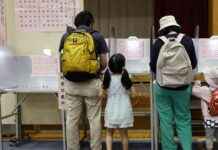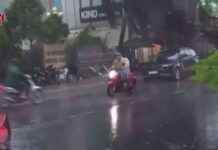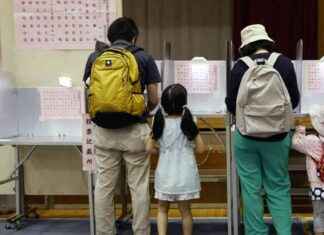“The B-1B is scheduled to participate in the afternoon training,” said an official from the South Korean Ministry of Defense, without giving further details on this deployment.
The B-1B is a supersonic bomber that is barely detectable by radar and capable of flying at very low altitude. Although it was originally designed to carry nuclear weapons, it has been used by the United States for exclusively conventional combat missions since the mid-1990s, indicates its manufacturer Boeing on its website. It was notably used in Iraq, Afghanistan and Libya.
The “Vigilant Storm” aerial exercises, which started on October 31, are the largest ever jointly organized by South Korea and the United States.
Initially scheduled until Friday, they have been extended until Saturday after the multiplication, by North Korea, of missile launches in recent days, and in particular the apparently failed launch of an intercontinental ballistic missile (ICBM) in the direction of from the Sea of Japan.
On Friday evening, the South Korean army announced that it had deployed some 80 F-35A stealth aircraft after detecting 180 fighter jets flying in North Korean airspace, a new episode in the spectacular rise in tension on the Korean peninsula in recent times. last weeks.
The United States on Friday denounced the repeated firing of missiles by North Korea which “ridiculously ridicules” the UN Security Council, with the complicity according to them of Russia and China, allies of Pyongyang.
After attacking Russia and China, Washington, Paris, London, other non-permanent member states of the Security Council advocated in a joint statement “unity” in the face of the “threat that South Korea North stands for international peace”.
China and Russia, whose relations with the West are at their lowest with the war in Ukraine, shunned this joint statement. Their ambassadors criticized the military exercises between the United States and South Korea and accused Washington of wanting to “force Pyongyang into unilateral disarmament through sanctions and pressure”.
UN Secretary General Antonio Guterres urged, through his spokesperson, that “North Korea immediately refrain from any act of provocation and fully comply with its obligations under the Council’s resolutions. of security”.
He said he was “deeply concerned by the tensions on the Korean peninsula and the thrust of a rhetoric of confrontation”, insisted his spokesman Stéphane Dujarric.
Pyongyang fired about 30 missiles on Wednesday and Thursday, including one that ended its course near southern territorial waters for the first time since the end of the Korean War in 1953. South Korean President Yoon Suk-yeol spoke of a “de facto territorial invasion”.
North Korea has always viewed US-South Korean military maneuvers as dress rehearsals for an invasion of its territory or an overthrow of its leaders.
The “Vigilant Storm” exercise constitutes “an aggressive and provocative military maneuver targeting the People’s and Democratic Republic of Korea”, denounced Wednesday the North Korean regime which threatened Seoul and Washington to “pay the most horrible price in history “.
Analysts attribute Pyongyang’s particularly angry reaction to the use of advanced F-35A and F-35B stealth aircraft during “Vigilant Storm”, seen as an ideal tool for carrying out lightning “decapitation strikes” against North Korean leaders.
North Korea had already, in September, revised its nuclear doctrine to allow itself to carry out preventive strikes in the event of an existential threat against the Kim Jong Un regime.
If North Korea’s nuclear “command and control system” is “endangered by an attack by hostile forces, a nuclear strike will be launched automatically and immediately,” the new doctrine says.
Seoul and Washington have been warning for months that North Korea is about to carry out a nuclear test, which would be its seventh.








